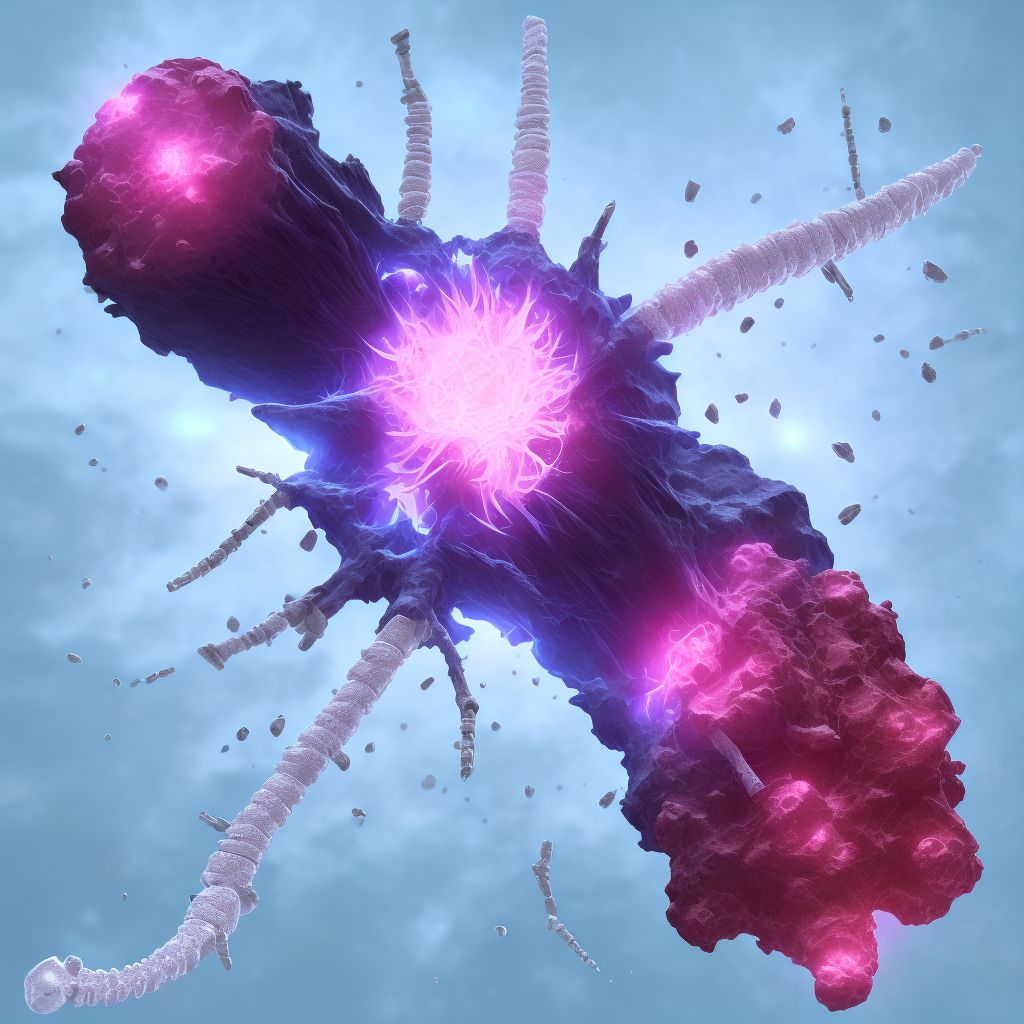
Nondisplaced segmental fracture of shaft of left tibia, subsequent encounter for open fracture type I or II with delayed healing Save
ICD-10 code: S82.265H
Disease category: S82.265: Nondisplaced segmental fracture of shaft of left tibia
Nondisplaced Segmental Fracture of the Shaft of Left Tibia: Understanding Open Fracture Type I or II with Delayed Healing
When it comes to bone injuries, a nondisplaced segmental fracture of the shaft of the left tibia can present unique challenges. This article aims to shed light on the condition, particularly in cases where it is accompanied by an open fracture type I or II and delayed healing. While we won't delve into treatment options here, understanding the nature of this injury can be helpful for both patients and healthcare professionals.
In simple terms, a nondisplaced segmental fracture refers to a break in the tibia bone, specifically in the shaft area, where the bone remains aligned but breaks into multiple fragments. This type of fracture is often caused by high-energy trauma, such as a car accident or a fall from a significant height.
In the case of an open fracture type I or II, the overlying skin may be compromised, leading to an open wound. Type I open fractures involve a clean wound, while type II fractures exhibit some contamination. These open fractures carry a higher risk of infection and delayed healing due to the exposure of the bone to the external environment.
Delayed healing is a common complication associated with these injuries. It occurs when the bone takes longer than usual to heal and can be influenced by various factors such as poor blood supply, infection, or inadequate immobilization.
Patients with a nondisplaced segmental fracture of the shaft of the left tibia, accompanied by an open fracture type I or II with delayed healing, require thorough diagnosis and appropriate management. Healthcare professionals will often conduct a comprehensive evaluation, including imaging tests, to determine the extent of the fracture and any associated complications.
- Thorough diagnosis and assessment of the nondisplaced segmental fracture
- Evaluation of the open fracture type I or II and associated wound
- Identification of factors contributing to delayed healing
- Development of a customized treatment plan
While treatment options won't be discussed in this article, it is worth mentioning that the management of these complex fractures often involves a multidisciplinary approach, including orthopedic surgeons, wound care specialists, and physical therapists.
In conclusion, a nondisplaced segmental fracture of the shaft of the left tibia, subsequent encounter for open fracture type I or II with delayed healing, can be challenging for both patients and healthcare professionals. Understanding the nature of this injury and its associated complications is crucial for appropriate diagnosis and management. If you or someone you know is dealing with this condition, seek professional medical advice for personalized treatment options.
Treatment of Nondisplaced segmental fracture of shaft of left tibia, subsequent encounter for open fracture type I or II with delayed healing:
Treatment Options for Nondisplaced Segmental Fracture of Shaft of Left Tibia
Dealing with a nondisplaced segmental fracture of the shaft of the left tibia can be challenging. However, with the right treatment options and proper care, patients can experience a successful healing process. In this article, we will explore some of the treatment options available for individuals with th...
To see full information about treatment please Sign up or Log in